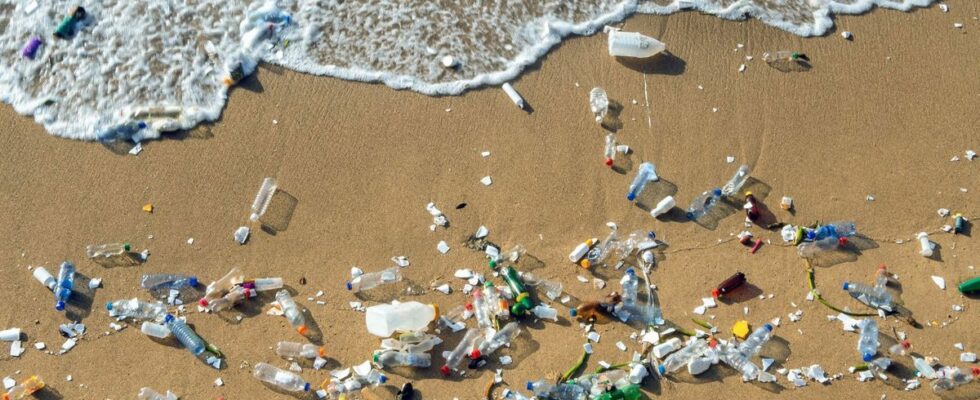Published on
updated on
Reading 2 min.
By analyzing data from satellite photos and submitting them to algorithms, researchers have succeeded in developing a first fairly precise map of the importance of plastics spread in the Mediterranean Sea.
For a long time, it was difficult to establish an accurate map of the quantity of plastic waste on the surface of the sea, as it was sometimes too insignificant to send back a detectable signal from space. With artificial intelligence, the situation has changed. Today, thanks to algorithms, satellites are particularly effective tools for quantifying it.
A group of Spanish researchers from the Institut de Ciències del Mar (ICM) and the University of Cadiz studied a whole series of images taken over six years by the Sentinel-2 satellite series above the Mediterranean Sea. In total, 300,000 images were examined. The result was significant clusters of waste within floating structures, the largest of which could be several kilometres long. An initial map was thus produced, indicating that the quantity of floating plastic detected in the Mediterranean over the period 2015-2021 could cover an area of around 95 km2. It emerged that most of this waste is found in the first fifteen kilometres of sea from the coast.
It is important to understand that the sensors installed on the satellite are absolutely not dedicated to the search for plastic materials and that it was only after a long learning process that these algorithms were able to account for the massive presence of this waste. This is why these researchers are encouraging the installation of a plastic detection sensor on future satellites, to account for its presence not only in the Mediterranean but in all the seas and oceans around the world. According to them, this would increase the capacity to detect plastic on water twentyfold. Today, the best-known concentration is the North Pacific Garbage Patch, also called the 7th Continent, which stretches between Hawaii and California.
Their work, funded by the European Space Agency (ESA), was published in Nature Communications.
By comparing this information with other environmental factors, it may then be possible to better understand the mechanisms that form these masses of plastic debris and therefore better direct actions and regulations to combat this marine pollution which has a lasting impact on biodiversity.
Please note that this Wednesday, September 4, 2024, ESA is preparing to send into space a new Earth observation satellite, as part of its Copernicus program, intended to collect and return quality and up-to-date data on the state of the planet. Named Sentinel-2C, it will replace Sentinel-2A in the Sentinel-2 constellation.
